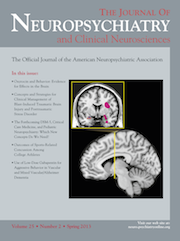Application of the Fuzzy Logic Concept in the Multiple Sclerosis Functional Composite for Scoring the Progress of Multiple Sclerosis
To the Editor: Multiple sclerosis (MS) is one of the central nervous system (CNS) diseases resulting from a demyelination process.1 To assess its progression, the Disability Status Score (DSS) was proposed in 1965, and the expanded version of this test (EDSS), was introduced in 1985.2 However, this scoring system, although used worldwide by neurologists, has subjective components leading to variation in clinical judgments among clinicians.2,3 Also, it does not consider the areas of cognition and upper extremity in assessment of status of the MS patient. Realizing the need for better assessment tool, in 1994, a new scoring system known as Multiple Sclerosis Functional Composite (MSFC) was introduced.4 The MSFC is relatively more objective than the EDSS and considers three areas of assessment: 1) lower extremity; 2) upper extremity; and 3) cognition.
The MSFC calculates the z-score for each area of assessment, and then the average of the three scores is reported as progression outcome. However, this approach gives the same weight to each area of assessment that is different from each other.4 The scores coming from each area of assessment have their own interpretation for a neurologist, as well as physiotherapist, and, finally, the MS patient. Therefore, mere summation and averaging of the scores from the three areas of assessment under question results in a final MFSC score that largely ignores their individual importance.
Considering this fundamental problem in MFSC scoring system, we suggest that assessing MS progression by using a fuzzy-inference system can be a more reasonable and practically applicable option than the simple average of the three areas of assessment currently employed.5 The fuzzy-inference system is similar to human reasoning and is basically developed to model complex and nonlinear systems as a set of rules with a simple conceptual structure. In fuzzy logic, which is the basis of fuzzy-inference systems, the intrinsic value to the fuzzy sets is an indication of the status of each item relative to its normal value. Each value resulting from the three areas of assessment has its own fuzzy set, and its parameters are obtained from the existing statistical norms. Thus, each broad area of assessment (Lower Extremity, Upper Extremity, and Cognition) will have three intrinsic values related to the three corresponding fuzzy sets. These values and their combinations will lead to better scores, reflecting MS progression better than the current MSFC, which only considers the average. In a fuzzy-inference system, the fuzzy output value is calculated through the T-norm operation, which can be of maximum value, for product, average, and so forth, and this gives the capability of assigning different weights to each input value. What follows is the degree of MS progression according to the three weighted criteria, converted to the three separate intrinsic values. A simple average value cannot give a specific assessment of MS progression. Also, the same two conventionally-obtained output values mean the same results; however, in the fuzzy concept, the output fuzzy value is specifically related to the output fuzzy set, which is also deterministically constructed by the application of a T-norm operation on inputted fuzzy sets and group values.
In the future, we intend to construct fuzzy sets for normal subjects of different age and gender. Then the same approach will be applied to the MS patients, and different aspects can be assessed for the possible advantages and interpretations by neurologists. For further study, we will assess the correlation of such indexing method only with lower extremity and EDSS and for all the dimensions considered together.
1 : Multiple sclerosis: risk factors, prodromes, and potential causal pathways. Lancet Neurol 2010; 9:727–739Crossref, Medline, Google Scholar
2 : Rating neurologic impairment in multiple sclerosis: an expanded disability status scale (EDSS). Neurology 1983; 33:1444–1452Crossref, Medline, Google Scholar
3 : Measurement of disability in multiple sclerosis. Neurology Asia 2008; 13:153–156Google Scholar
4 : The Multiple Sclerosis Functional Composite: a clinically meaningful measure of disability. Neurology 2010; 74(Suppl 3):S8–S15Crossref, Medline, Google Scholar
5 : Fuzzy Sets, Fuzzy Logic, Fuzzy Systems. River Edge, NJ, USA World Scientific Press, 1996Crossref, Google Scholar



